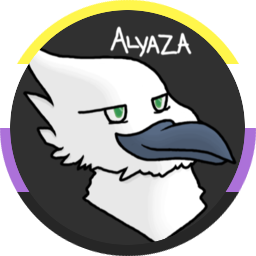After the launch ChatGPT sparked the generative AI boom in Silicon Valley in late 2022, it was mere months before OpenAI turned to selling the software as an automation product for businesses. (It was first called Team, then Enterprise.) And it wasn’t long after that before it became clear that the jobs managers were likeliest to automate successfully weren’t the dull, dirty, and dangerous ones that futurists might have hoped: It was, largely, creative work that companies set their sights on. After all, enterprise clients soon realized that the output of most AI systems was too unreliable and too frequently incorrect to be counted on for jobs that demand accuracy. But creative work was another story.
As a result, some of the workers that have been most impacted by clients and bosses embracing AI have been in creative fields like art, graphic design, and illustration. Since the LLMs trained and sold by Silicon Valley companies have ingested countless illustrations, photos, and works of art (without the artists’ permission), AI products offered by Midjourney, OpenAI, and Anthropic can recreate images and designs tailored to a clients’ needs—at rates much cheaper than hiring a human artist. The work will necessarily not be original, and as of now it’s not legal to copyright AI-generated art, but in many contexts, a corporate client will deem it passable—especially for its non-public-facing needs.
This is why you’ll hear artists talk about the “good enough” principle. Creative workers aren’t typically worried that AI systems are so good they’ll be rendered obsolete as artists, or that AI-generated work will be better than theirs, but that clients, managers, and even consumers will deem AI art “good enough” as the companies that produce it push down their wages and corrode their ability to earn a living. (There is a clear parallel to the Luddites here, who were skilled technicians and clothmakers who weren’t worried about technology surpassing them, but the way factory owners used it to make cheaper, lower-quality goods that drove down prices.)
Sadly, this seems to be exactly what’s been happening, at least according to the available anecdata. I’ve received so many stories from artists about declining work offers, disappearing clients, and gigs drying up altogether, that it’s clear a change is afoot—and that many artists, illustrators, and graphic designers have seen their livelihoods impacted for the worse. And it’s not just wages. Corporate AI products are inflicting an assault on visual arts workers’ sense of identity and self-worth, as well as their material stability.
Not just that, but as with translators, the subject of the last installment of AI Killed My Job, there’s a widespread sense that AI companies are undermining a crucial pillar of what makes us human; our capacity to create and share art. Some of these stories, I will warn you, are very hard to read—to the extent that this is a content warning for descriptions of suicidal ideation—while others are absurd and darkly funny. All, I think, help us better understand how AI is impacting the arts and the visual arts industry. A sincere thanks to everyone who wrote in and shared their stories.
“I want AI to do my laundry and dishes so that I can do art and writing,” as the from SF author Joanna Maciejewska memorably put it, “not for AI to do my art and writing so that I can do my laundry and dishes.” These stories show what happens when it’s the other way around.



And you can’t tell when the voices do turn out right, the pictures are fine, and the prose works well.
This all reminds me a lot of how people railed against CGI in movies, claiming that CGI scenes or actors would always look “uncanny valley” and that they’d always be able to tell. Many people continue to claim that to this day, unaware of just how much CGI is in each frame that they don’t recognize as CGI. Or worse, they look really hard for things to complain are bad CGI and end up accusing non-CGI shots of being CGI.
Not sure who you’re used to dealing with, but I use AI all the time — damn near every day — and have done for 6 years. I’ve written a discord AI dungeon master. I’ve written hundreds perhaps over a thousand short stories often starting from a scenario I’ve written and watched them all play out time and again. I know LLMs inside and out. I’ve jailbroken them to see how far they can be pushed in terms of violence, evil, and intimacy.
I’m no professional author to be sure, but because I lack the knack for storytelling, not because I don’t understand the craft. So I understand the tools pretty well, and I can tell when they are poorly employed.
And I’m irritated because I 100% can tell, and I wish you were right.
Alright I’ve rethought about my earlier response. It’s true, but also irrelevant. So let me try that again without taking your comment personally.
The question is will regular people be able to tell. I think over time, even if they can’t put their finger on exactly why they don’t like something, people will demonstrate a preference for human-created art.
That’s not the end of the story — AI generated is faster and cheaper and economics will play a role — but that was my point.